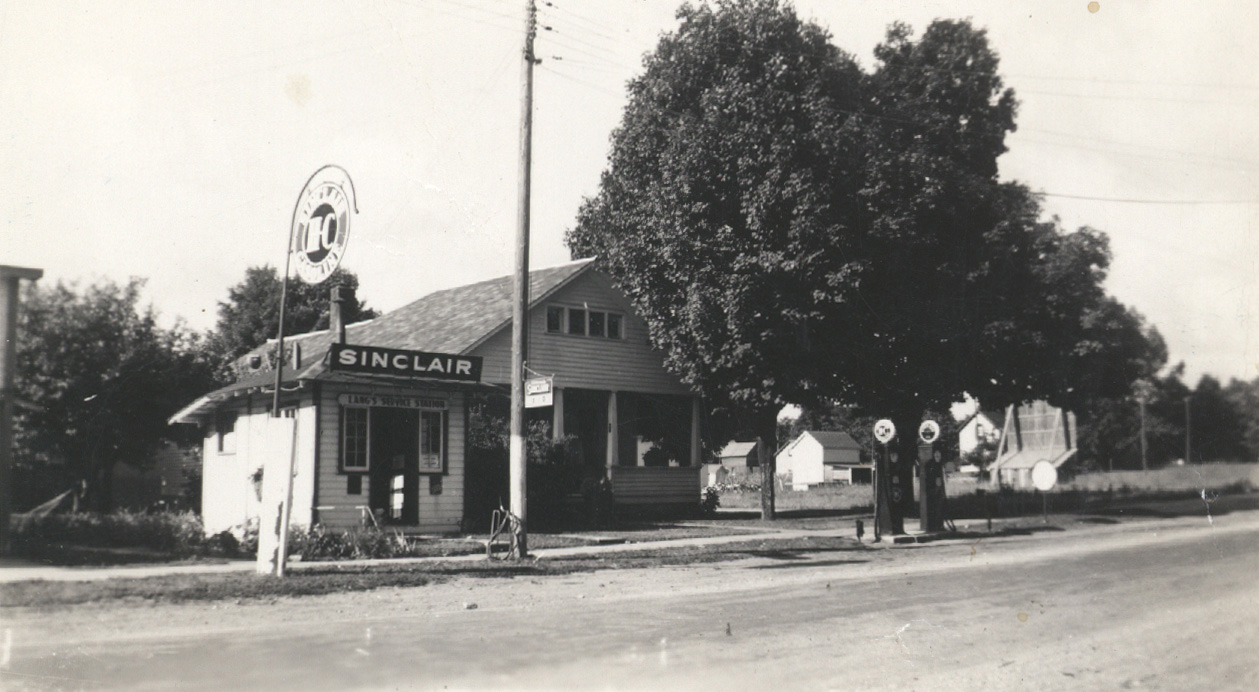Carl Manke Interview
Recorded in 1979 By Bonnie Hughes.
|
Much of what we know about the buildings along Lake Street comes from stories like these from old timers. We added the photos and captions to Carl's story. Paragraphs with nothing but "..." represent passages Carl wanted to keep private. "Well I'll start with the Mirror Works. Zoerner [later clarified] came here in 1910 to make a deal with the company that they would buy the glass, and he would silver it and bevel it. And so he came here. [moderator asked him to spell the name... garbled ZOERNER] He came with several of them. You probably heard of them. Patty Basso [sp?] and Newman [sp?] and Bill Groehne. And they all came with him." Working and Living at the Planing Mill"They took over the planing mill and started in there, but he found out it was too costly, because they had to hire a fireman to keep the boilers fired. So he talked it over with Adolph Haase [sp?], and the factory they were making money then that they didn't afterwards. They must have made enough. They paid their preferred stockholders seven percent interest a year. They paid that every year. They must have had enough surplus that they built an addition to the west end of the factory. You can probably see part of it. And the mirror works occupied the lower part. That was in 1910. I was the secretary. I had a little stock in it. About the same time the [Grund] mill started up you know. "Around '9 and '10, [there] was a shortage of housing, Grund had the sawmill, and he put up four houses. They're all gone now. ..." |
|
|
"Well then later on in years of shortage, in fact when we got married, we had no place to live. Zoerner and Biggie [sp?] the cashier had taken over the planing mill and made a four apartment flat out of it. We were the first ones that lived in it. We lived upstairs." |
Click here to see the entire 1903 plat map of Arcadia. |
|
|
|
|
"About 1904 and '05 the Company built that string of houses from Fourth Street to the south on the east side they built all those houses and sold them to employees and some of those all but two or three on the west side was built by the Company in 1904 and '05. And that flat gave out after the mill went out. By then it was torn down. O'Rorke [sp?] tore it down. He was going to build a barn out of it, but he never built it." The Beaver BuildingModerator: "What can you tell us about the Beaver Building?" "Well, you know where Finch park is. Across the alley George Beaver had the store. He was a cripple. He used to be supervisor here. It was taken over by different ones. John Hilliard [sp?] took it one time. We were living upstairs in the flat, and my wife wasn't well. She got injured when the first baby was born, so John Hilliard moved upstairs in the building and told us we could rent his place there and live there as long as we wanted to. We moved in in 1913. His wife got tired of living upstairs, so we had to move out. And there was no place to move to. My brother was living on my father's farm, and my father and mother intended to live there the next year and live upstairs. So they fixed up the upstairs, and we lived there then until the spring. Then we moved into my father and mother's house. And then in '22, why then I bought that building." |
|
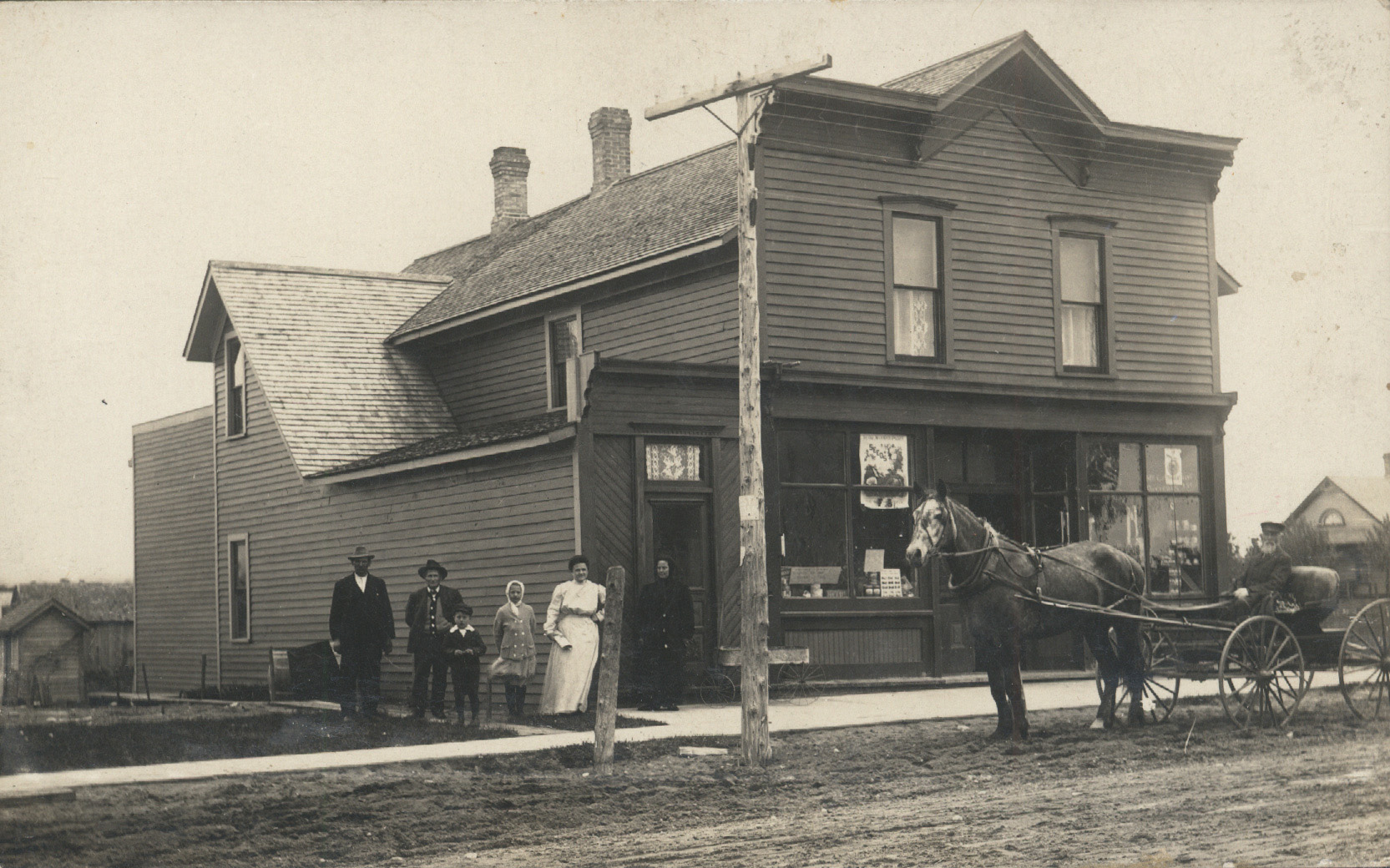
Moderator: "Now what did Beavers sell? General merchandise?" "Yes. I don't think he sold clothing." Moderator: "...and furniture?" "No. No." Moderator: "Then you say it passed from Beavers to Hilliards. And from Hilliards to who after that?" "The Coop. Onekama Coop. They also organized Arcadia Coop. George Hull organized that. Farmers put in their money. They used the Macabee [sp?] Hall downstairs. Hull got in a lot of merchandise. And farmers came in and traded out what they had put into it. All George had left was some of the flour that he took for his wages. What they paid in, instead of leaving the money in and buying [garbled] for the merchandise, they took out what they paid in." The Skinner BuildingModerator: "There was a Skinner building next door. Who was Skinner? What was his first name?" "Herman" Moderator: "Herman Skinner. What type of merchandise did Herman Skinner...?" "He had an ice cream parlor." |
 The Beaver Building |
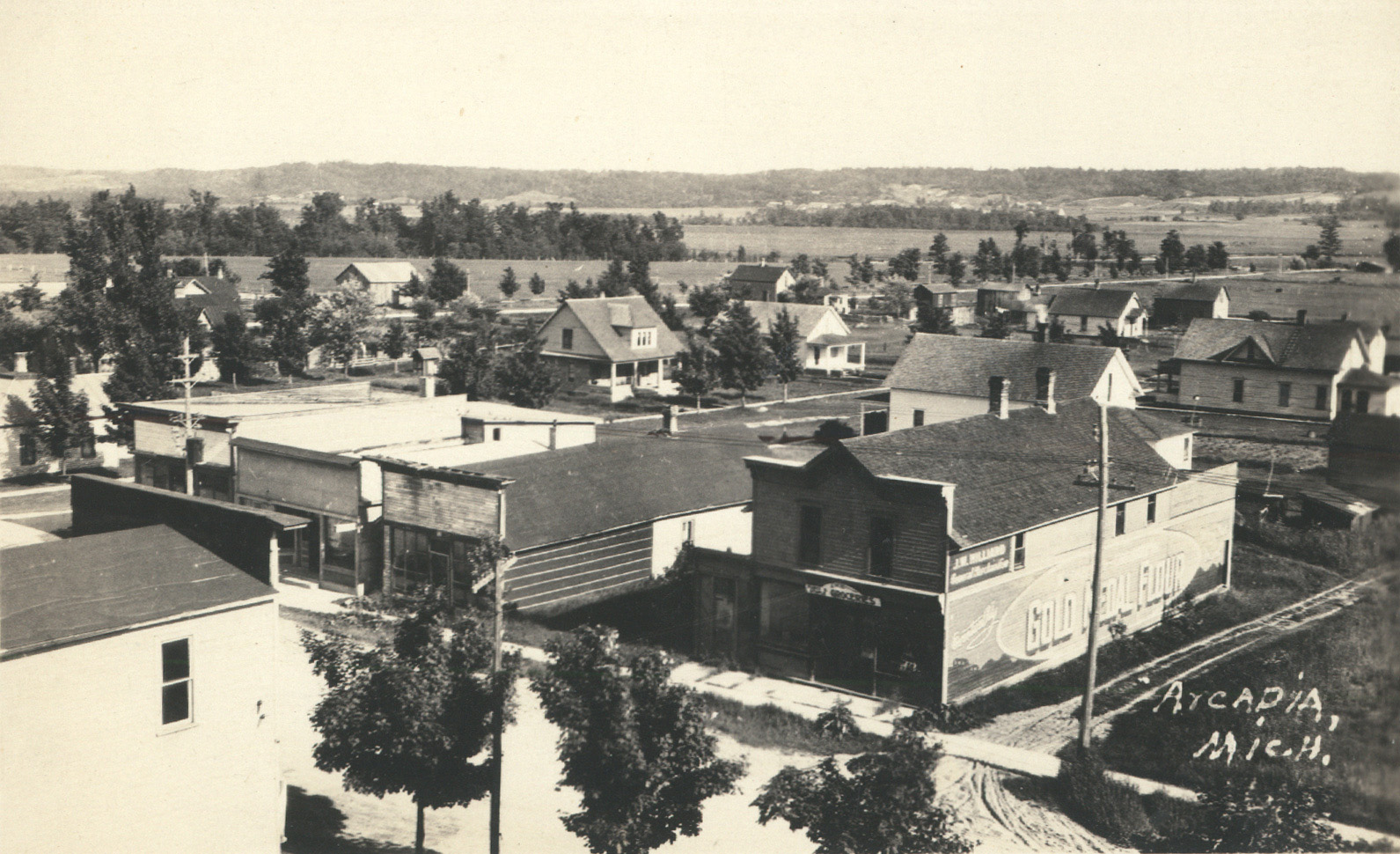
Moderator: "And was it strictly and ice cream parlor, or did he sell lunches too?" "I don't think so. For a while Parker had a barber shop in there. That was a building moved from Burnham." Moderator: "Was it a barber shop before it was an ice cream parlor?" "Yeah. I remember this when my mother-in-law died in 1911, Parker had his pool room in there and barber shop." Moderator: "Well then at that point in time we had the [garbled] barber shop and we also had the Parker barber shop. So there were two barber shops in town?" "Yeah." Moderator: "And who went on to Skinners. What happened to the building?" |
 Beaver and Skinner Buildings The Beaver building is on the right. Note the J. W. Hilliard sign on the side of the building above "Gold Medal Flour." The first building to its left is the Skinner building. |
 |
 The Neighborhood This is a map showing the area along Lake Street between 4th Street and 6th Street or M-22 today. North is to the right. |
The Smith Saloon and Ed Schiarra's Pool Room"The saloon was at the corner there. Smith Saloon. That was originally built by August Schimke [sp?]. He had a hardware store in there, and that didn't turn out too good, so Kalbitzer was running the Arcadia House. He acquired that building and had a saloon there. And just before the mill burnt in 1916, Fred Smith bought the building and had the saloon there. After prohibition we had a club out in the country. A clubhouse you know..." Moderator: "Now we skipped one. In between Skinner's and Smith's saloon was Ed Schiarra's pool room." "Ed Schiarra's pool room was across the street from there." Moderator: "It wasn't next door to Skinner's?" "I don't think so. No, I think that was one of the buildings that burnt. Yeah." Moderator: "So in other words Skinner was next door to Smith's saloon?" "Yeah. Between Beaver's and..." Moderator: "[garbled] across the street" "Yeah. There was one building there burnt." Ted Lang's and the Basket FactoryModerator: "Then we cross the street, and there's the Ted Lang house and gas pump." |
|
|
"Yeah, well, that was. That house was built first when the basket factory came in. A half Indian was superintendent of the basket factory." Moderator: "What was his name?" "I don't know. It would be in the time book probably. Maybe if I look through the book who lived there. I remember one thing. That he walked down to the factory one time on a Sunday and the factory had caught afire and he put out the fire. And he told Starke about it, and Starke gave him a cigar. He scoffed about it. Cheapskate. He said they usually buy me a new suit." Moderator: "OK. Ted Lang had a house and sold gas on the corner..." "Yeah. He never owned. I don't think he owned the house." Moderator: "But he lived there." "Yeah." Moderator: "And who ran the gas pump?" "He had a gas pump." William Montey's Shoe RepairModerator: "What was right next door? Because William Montey [sp?] shoe repair would he be next?" "I think there was an addition next to Keebaugh's Livery barn there. I think he had a small building inside Keebaugh's building." Moderator: "Did he sell shoes?" "No. Just shoe repair." Moderator: "Did he have it all the time or did it pass on to someone else?" "No, he had it all the time." |
 The Lang Gas Station By the time this photo was taken, the buildings to the west (Beaver, Skinner, etc.) had burned down. Note the movie screen in the open field in the background. That area was used for Arcadia's free movies. |
Keebaugh's Livery Stable and the Matteson BuildingsModerator: "Now Keebaugh. What was Keebaugh's first name?" "Walter" Moderator: "Did he do anything besides have a livery stable?" "That's all. Afterwards he added some merchandise. Groceries." Moderator: "In the same place?" "Yeah. Gee, I don't know whether he built an addition to it or just took part of it and a card room. I know my son played there once. Played pinochle. He bid and had 150 trump you know and kept on playing and had a double run and didn't know it. We always used to play double deck... ace 11, 10 10, king 4, queen 3, jack 2, so it made a lot of difference in the playing." ... Moderator: "Now we cross the street, and Matteson Hotel and the first store." "Matteson brothers, Bill Matteson and Charlie Matteson and then then the brother in Pierport. They built that as a store. Charlie built his own store across the street, and it was made into a hotel. And he used to do a little building, Bill Matteson. He wasn't very busy, but I have a little table at home that he built." |
|
 |
 Matteson Manor This building was at the southeast corner of Lake Street and 6th Street. The first building to the west (right in the picture) was the Keebaugh Livery Stable, and then the Mantey Shoe Repair, and the Lang Gas Station. |

"Charlie Matteson had a sign in the window there. Here since 1899. Whether he moved right away... I'm quite sure he married in 1903. He lived there then already. He married Ada Waddam [sp?]." Moderator: "She was a teacher." "Yeah" Wareham's BuildingModerator: "And then we go on to the Fred Wareham store and the Maccabee Hall. And the Macabees owned that." |
 Charles Matteson Store This building was directly across from Matteson Manor on the northwest corner of Lake Street and 6th Street. |
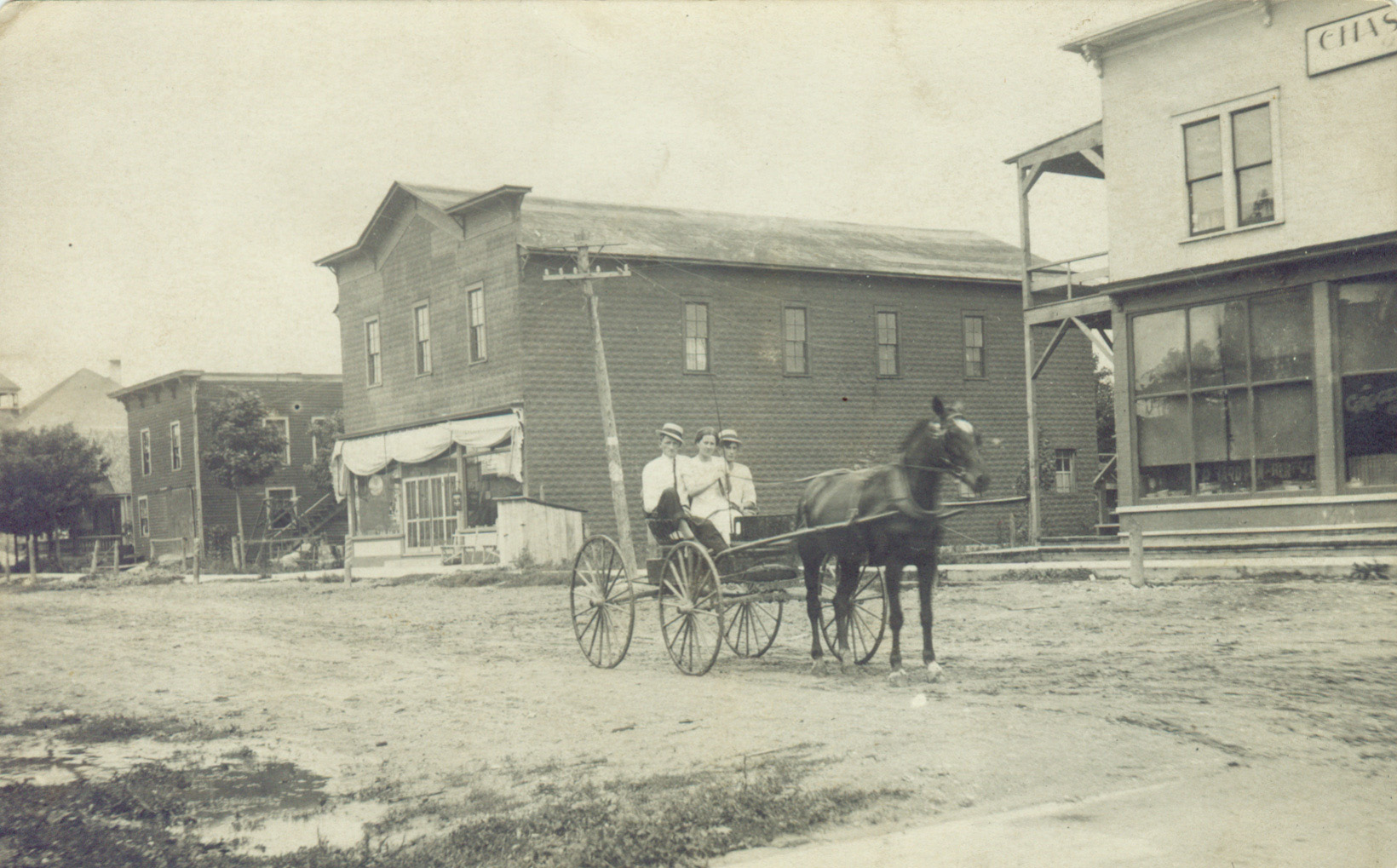
"That foundation I remember. I used to drive the cows from town. [garbled] farm like they did in the old country. The farmers all live in the town. I'd have to drive their cows out of town way up to what they called that used to be Katie's corner. Earl Finch lived there and then my father-in-law bought it. And then to the right about two miles and then I came back down the railroad track before school and after school. And that foundation was there for years and years for the Macabee Hall, and they finally built it.And there were so many stores in there. Wareham was one of them." Moderator: "Did Fred Wareham rent it from the Macabees?" "Yeah. Yeah. And they had dances upstairs and shows and things. Later on they had some plays like the arrival of Kittie they had there on December 21st I remember while [garbled] was in the hospital in Manistee." Moderator: "What year was that?" "1921. December 21st." Moderator: "Fred Wareham kept the store until he died?" "No, he moved away." Moderator: "Then what happened to the store?" "Well, that stood there quite a while. Then finally they tore it down and built the church in Frankfort out of it. [Pilgrim]" |
 The Wareham Building The building in the center is the Wareham building. On the right is the Charles Matteson Store. Just past the Wareham building is Irwin's Blacksmith Shop. |
Irwin's Blacksmith ShopModerator: "Now we go on to Irwin's Blacksmith Shop. That was made out of timbers from the Minnehaha wasn't it?" "No. I don't think they got any lumber out of the Minnehaha. No. He used to be blacksmith in Burnham, and then he moved to Arcadia. He was the first what you might say public blacksmith. My father was blacksmith for the Company. But still he had to shoe horses for outsiders, for farmers, but the Company collected it. He got so much a day. He got $1.75 a day, no overtime, no loss of time. Of course, he had quite steady work." ... Moderator: "Next to Irwin's blacksmith shop, we have a house. Do you know who lives in that house?" "That was Keebaugh's house." [lots of questions by moderator and unsure guesses or short answers.] ... [garbled tape] |
|
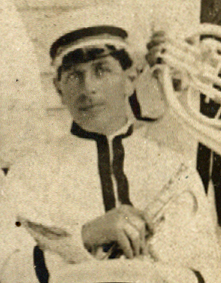
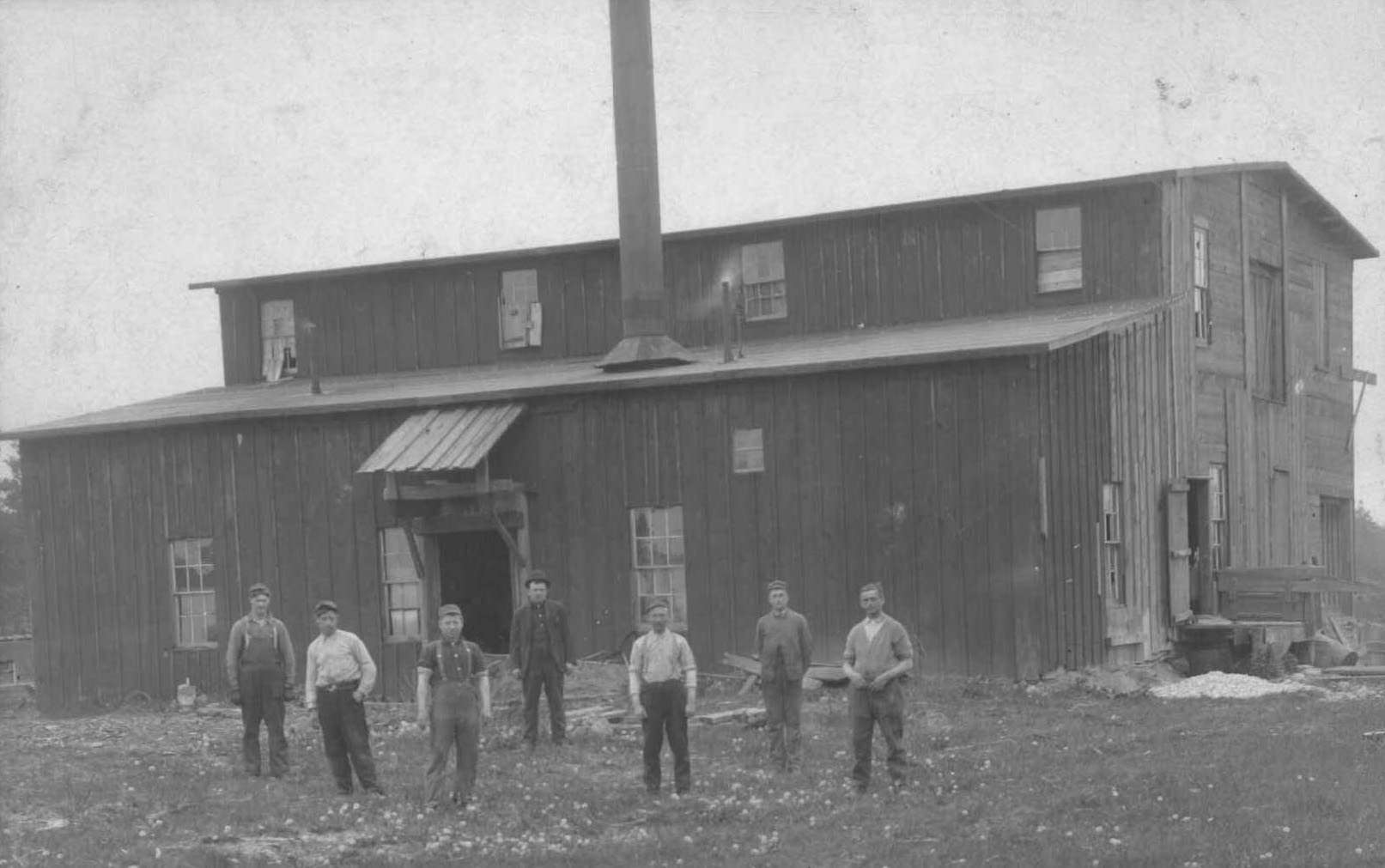 This is the Planing Mill. It was just north off Oak Street at the North end of 4th Street.
This is the Planing Mill. It was just north off Oak Street at the North end of 4th Street.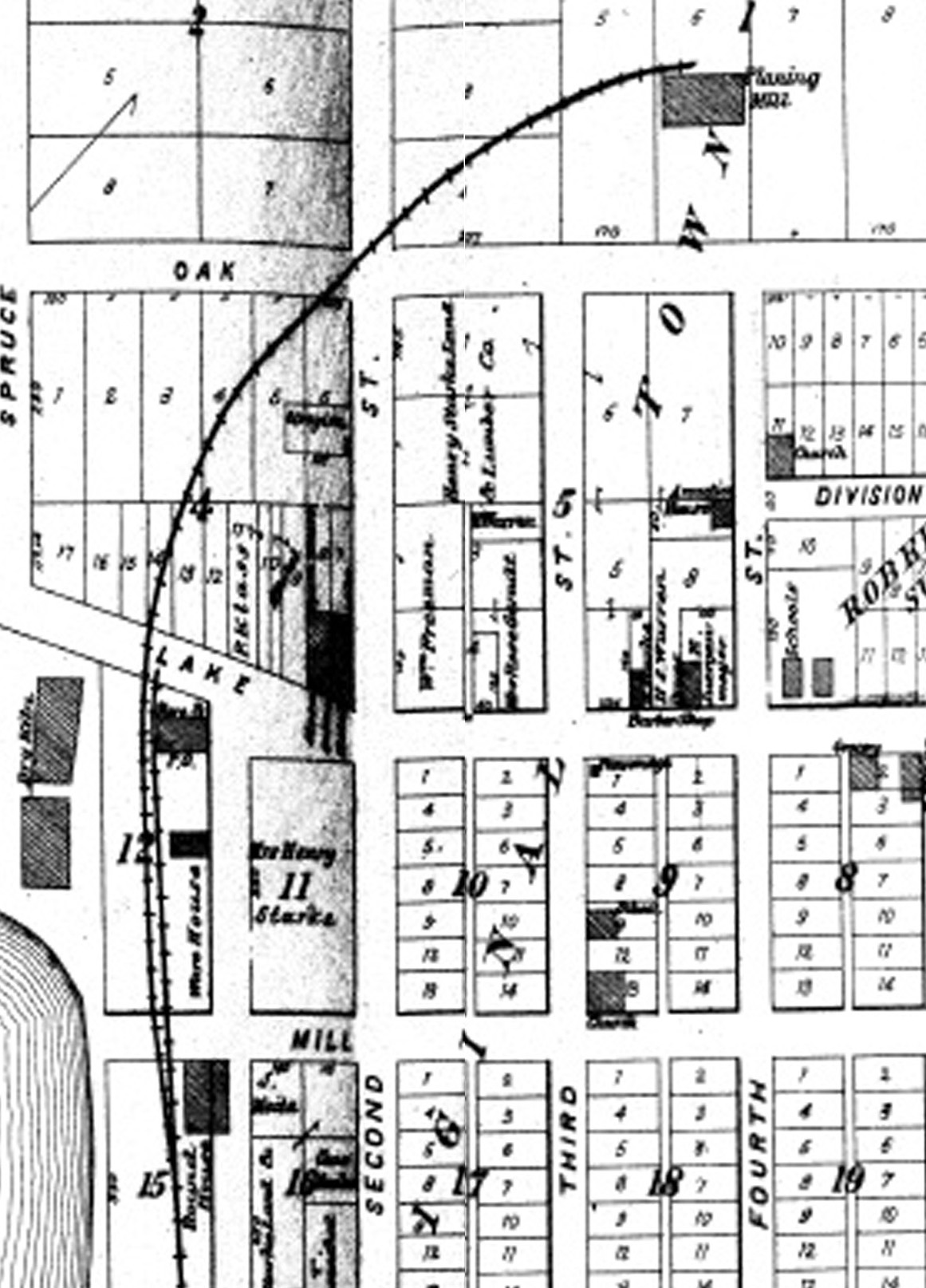
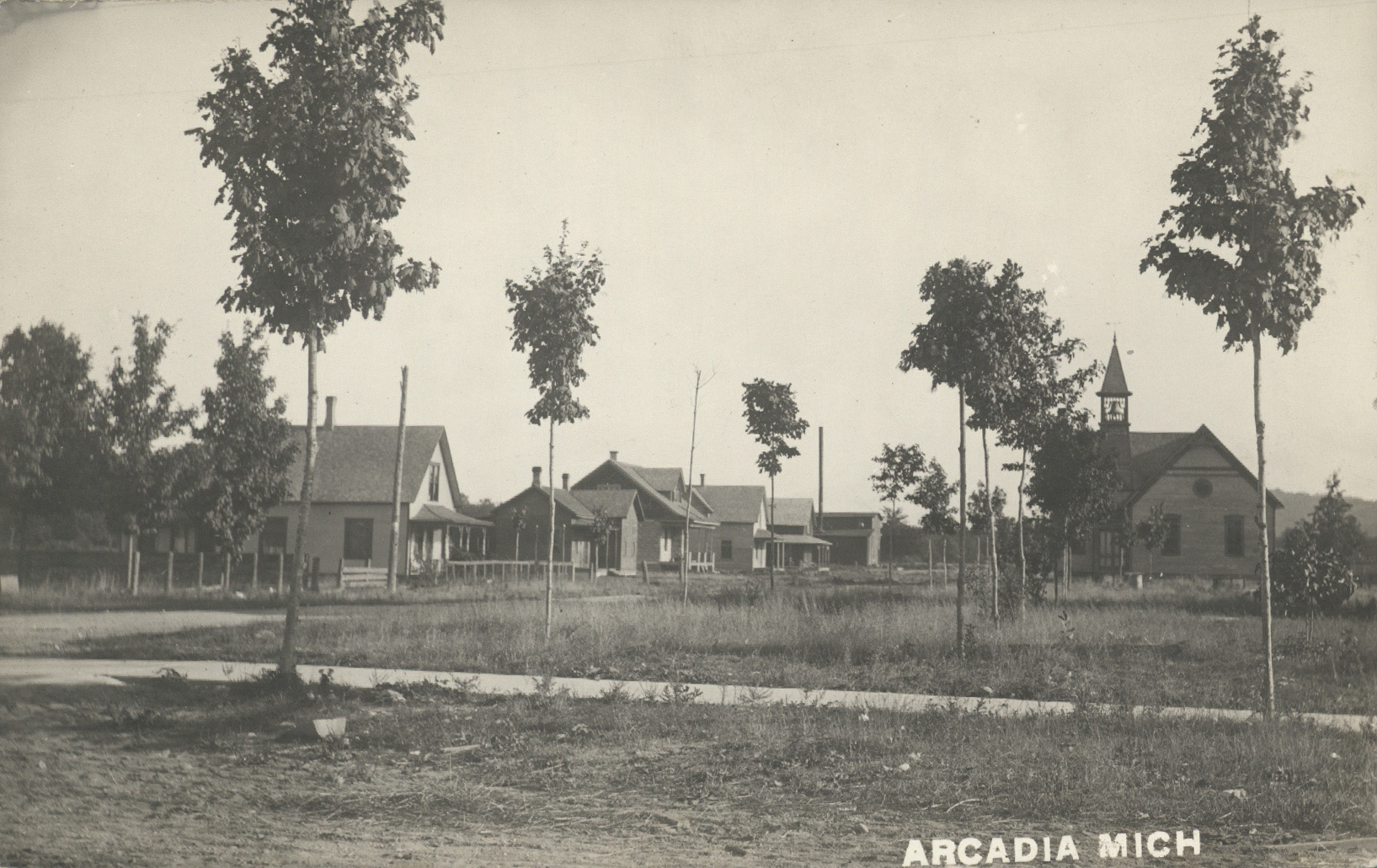 The Planing Mill can be seen at the far end of 4th Street. Notice the tall smokestack shown in the previous picture.
The Planing Mill can be seen at the far end of 4th Street. Notice the tall smokestack shown in the previous picture.